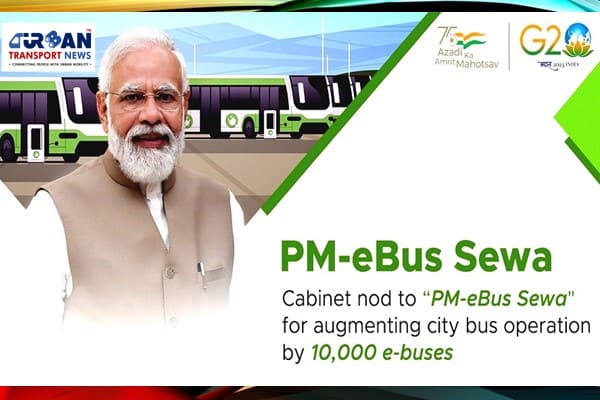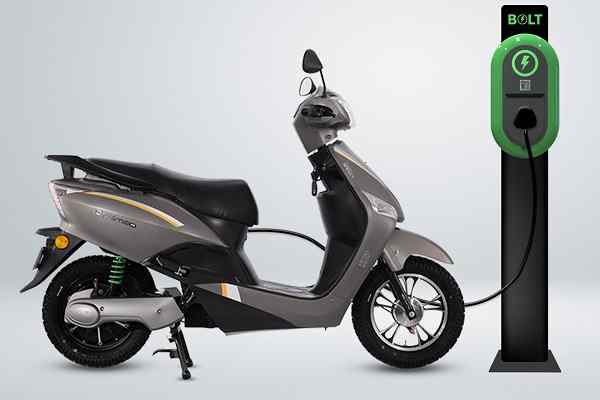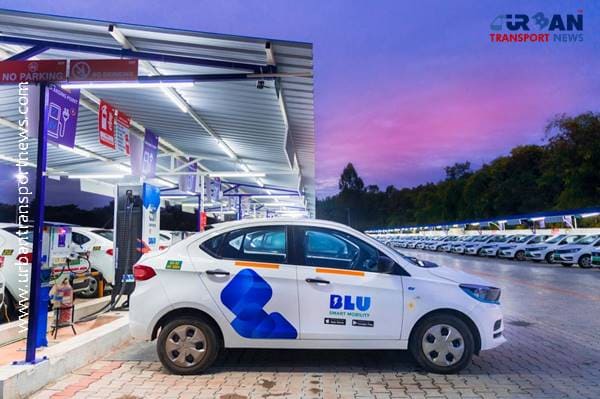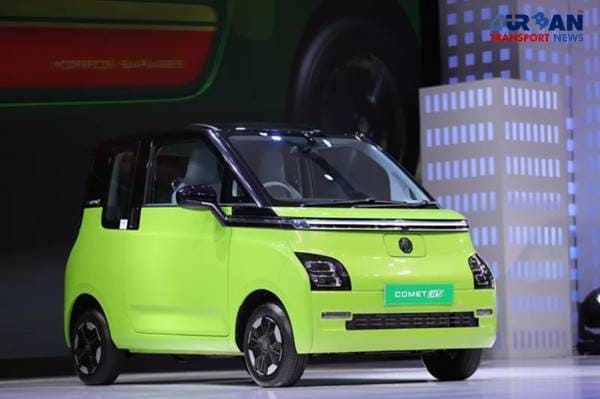 Delhi unveils ambitious Urban Mobility Vision: Luxury Metro Coaches, New Tunnels and Pod Taxi
Delhi unveils ambitious Urban Mobility Vision: Luxury Metro Coaches, New Tunnels and Pod Taxi Qatar approves Saudi Rail Link Agreement, Accelerating Gulf Railway Vision 2030
Qatar approves Saudi Rail Link Agreement, Accelerating Gulf Railway Vision 2030 UP Govt plans to introduce Water Metro services in Ayodhya, Varanasi & Prayagraj
UP Govt plans to introduce Water Metro services in Ayodhya, Varanasi & Prayagraj India’s First Urban Ropeway begins Trial Run in Varanasi, Set to carry 1 Lakh passengers daily
India’s First Urban Ropeway begins Trial Run in Varanasi, Set to carry 1 Lakh passengers daily India and Bhutan to Build First-Ever Rail Link: ₹4,033 Cr Project to Boost Regional Connectivity
India and Bhutan to Build First-Ever Rail Link: ₹4,033 Cr Project to Boost Regional Connectivity Patna to launch Eco-Friendly Water Metro; Trial Run soon between Digha and Kangan Ghats
Patna to launch Eco-Friendly Water Metro; Trial Run soon between Digha and Kangan Ghats Air India Group set to launch Flights Operations from Navi Mumbai International Airport
Air India Group set to launch Flights Operations from Navi Mumbai International Airport Chennai to launch 25-Year Mobility Plan with Unified QR Ticketing and One-App Transit System
Chennai to launch 25-Year Mobility Plan with Unified QR Ticketing and One-App Transit System Kochi Metro bags ₹4.4 crore contract to prepare DPR for Mumbai Water Metro Proejct
Kochi Metro bags ₹4.4 crore contract to prepare DPR for Mumbai Water Metro Proejct Navi Mumbai International Airport set for September launch; IndiGo and Akasa Air to lead Operations
Navi Mumbai International Airport set for September launch; IndiGo and Akasa Air to lead Operations
India's PM-eBus Sewa Scheme and the Path to Net Zero

With the approval of the “PM-eBus Sewa” bus scheme for augmenting city bus operations by the Union Cabinet, India’s path towards achieving its net zero targets by 2070 is lauded by many. The scheme would have an estimated cost of Rs. 57,613 crore, out of which Rs. 20,000 crore will be provided as a subsidy by the Central government, and the state governments and ULBs will be responsible for raising the remaining funds. This scheme would adopt a PPP model for deploying 10,000 e-buses in 169 cities and would support bus operations for 10 years. The cities are said to be chosen through a challenge method with a benchmark population of 3 lakh and above, and priority will be given to cities that lack organised bus services. As the Finance Minister, Smt. Nirmala Sitharaman, stated in her budget speech this year, the focus of the deployment of these buses would be in tier 2 and tier 3 cities.
While the scheme is a welcome move to bridge the demand deficit for buses in Indian cities, the implementation level challenges of e-buses that still prevail in most Indian cities need to be fairly analysed to successfully implement the scheme at the ground level. States or cities will be responsible for running the bus services under this scheme and making payments to the bus operators on a per kilometre basis. However, this is a challenging step given the already dying situation of most STUs, making them unable to finance resources for efficiently maintaining these e-buses. Financial constraints also affect the majority of city bus transport SPVs established under PPP models, such as PMPML in Pune, AICTSL in Indore, and JCTSL in Jaipur, which are owned and managed by the Urban Local Bodies. Despite adopting PPP models in the past, the private operators are given very little autonomy, due to which these models have not been able to leverage different business avenues.
Transitioning to e-buses would have remained a far-fetched dream for India if it were not for the existence of the private bus sector. Given that the private sector controls 92% of the 2.2 million buses owned by the public and private sectors combined in India, the share of private players in the bus transport ecosystem is evident. There are around 20 lakh private sector buses and 1.5 lakh public sector buses, according to the MoRTH's Road Transport Year Book (2018–19). Despite the dominance of the private sector, the policies and regulations that hinder the enhancement of competition have limited the provision of quality bus services. The procurement and maintenance of e-buses have been challenging for private players.
The tendency of most states and cities to adopt low-cost bidding has led to anti-competitive practices whereby small operators who cannot operate at such low quotes ultimately do not get a chance to compete. The high upfront capital cost and unfavourable lending patterns of banks towards e-buses that supply buses to STUs, due to the poor financial condition of STUs, make it hard for small operators to enter the market. While these schemes prioritise decarbonising the transport sector, a lot of challenges that are still prevalent in various PPP models, such as operational efficiency, charging time, and e-bus driving range issues, can still prevail despite the implementation of this scheme. Certain cities where e-buses are already plying, like Hubli-Dharwad, have highlighted issues pertaining to the foreign make of the bus, due to which spare parts are to be outsourced, leading to delays in the maintenance of buses. Changes in financial structuring will be needed to provide funds for OEMs, battery producers, charging stations, and end users. However, this would be challenging given that e-bus contracts are made for 10–12 years.
However, mere electrification of fleets would not address India’s growing concerns about the lack of an integrated public transport system. It is ideal that in a country with more than 2 million registered buses, there would be no appreciable reduction in carbon emissions from the addition of 10,000 e-buses, which are neither replacing old buses nor located in cities with significant carbon emissions.
Bus infrastructure, multimodal interchanges, national common mobility card-based automated fare collection system, charging infrastructure, etc. will be constructed as part of this scheme's green urban mobility programme. This is a commendable move and should also be supported by policy changes to formalise intermediate public transport, such as shared autos, to ensure first and last-mile connectivity. Commuters often opt out of using buses due to a lack of connectivity, accessibility, and information. They do not have the luxury of choosing if they want to board an electric or diesel bus, as the number of buses and the frequencies do not meet passenger demands. The overarching consideration in this case is the need for better implementation strategies while formulating such commendable policies that can support the transport industry and India’s path to net zero by 2070.







